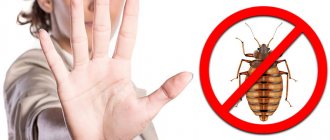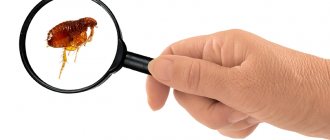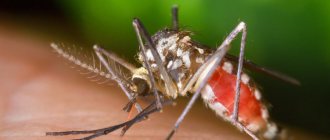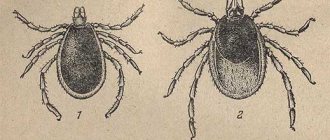Last updated June 4, 2022
Tiger mosquitoes have been found in southern Russia. Svetlana Roslavtseva, head of the laboratory of disinfestation problems at the Institute of Disinfectology of Rospotrebnadzor, warned about dangerous insects that carry dangerous diseases .
According to her, tiger mosquitoes have settled throughout the Caucasian coast, reaching Novorossiysk and Crimea. Insects are easily recognized by the black and white stripes on their legs and body.
Aedes albopictus. Photo: Public Domain
What does a tiger mosquito eat?
Only female mosquitoes need blood, and only during the breeding season. Biologically active blood components found in red blood cells are important for the development of eggs inside the female. Blood is a nutrient required at certain times in the insect's life cycle. The rest of the time, females and males make do with flower nectar. Mosquito larvae evolve in water, feeding on dead protozoa and plants. In conditions of nutritional deficiency, the larvae can eat the eggs of other mosquitoes.
Description of the species
Rating: 10 best mosquito repellents
Rating: 10 best mosquito repellents
Even the best spray against mosquitoes and ticks in nature does not always protect against other blood-sucking insects...
netkomaram.ru
Open ›
Latin name: Aedes albopictus. These are Asian tiger mosquitoes or simply striped mosquitoes. This popular name is due to the characteristic black and white coloring of the legs and body of the bloodsucker. The adult's back is black with a distinct white stripe down the center. The insect has an average size for this family: from 0.2 to 1 centimeter, with males on average 20% smaller than females. Sexual dimorphism is manifested by the presence of porous antennae and the oral apparatus modified for nectar feeding in males.
People are often interested in the difference between a tiger mosquito and a regular one. These carriers of infections can be distinguished from less dangerous mosquitoes not only by their coloring, but also by their body structure: the abdomen gradually narrows in the distal region. The tiger mosquito is much smaller than the more common bloodsucker species in Europe and Russia (Culiseta annulata). In other countries, there are similar types of pests that are not so easy to distinguish.
The white-striped mosquito was first described in the late 19th century by Australian scientist Frederick A. Askew Skewes. Initially, the genus was determined incorrectly, but already in the middle of the last century, entomologists managed to correctly classify it. In recent years, there has been discussion about the feasibility of identifying a separate genus for the Asian tiger mosquito.
Other articles in the section: Life cycle of a common mosquito
Go to website
What is the danger of the Asian tiger mosquito
The tiger mosquito bites not only at night, but also during the day, as it is not afraid of high air temperatures and sunlight. At the moment of the bite, anticoagulants are injected into the skin through the mosquito's proboscis. These ingredients not only reduce blood clotting, but are also strong allergens. Multiple bites cause local skin inflammation.
The tiger mosquito is dangerous for humans and animals because it carries viral infections - Dengue fever, Chikungunya disease, Zika virus.
Your opinion
Cancel reply
- WITH
Svetlana 7 months agoToday I slammed one of these in the Moscow region. To be honest, it was very stressful. I saw this for the first time in my life!
- 0
- Share
- Facebook Twitter Google+
- I don't agree
\n\ Reply
How to protect yourself
Protection against all types of blood-sucking insects is the same. Premises in areas where they are active must have mosquito nets. Aerosols containing insecticidal and repellent agents should be applied to clothing. If possible, it should cover open areas of the body. Otherwise, special creams should be applied to them. Natural substances that repel mosquitoes include:
- dried chamomile flowers, stems and leaves;
- elderberry branches;
- juniper, clove, anise, basil, valerian and eucalyptus oils;
- sagebrush;
- pine cone smoke;
- camphor;
- citrus.
Itching at the site of the bite is eliminated:
- cold compress or ice;
- onion juice;
- lemon;
- honey;
- Apple vinegar.
If you have an allergic reaction, you should take antihistamines.
Where do they live?
The tropics and subtropics are ideal habitat conditions for this insect. Most often, the striped mosquito can be found in Southeast Asian countries. In these regions, the insect remains active all year round. The ability to adapt to harsher climatic conditions has allowed Aedes albopictus to migrate to other countries. The black striped mosquito survives in temperate or cold climates by hibernating. At the same time, eggs of insect strains living in cold regions have increased resistance to low temperatures. Adults sometimes remain active in warm areas during the winter.
You might be interested to know: Where do mosquitoes come from in an apartment?
The tiger mosquito lives in Russia, but is not a common mosquito. Most often they can be found in the south of the country. No more than 1,000 bites are reported annually, with rare cases of disease transmission. In summer, the insect is often found in the Krasnodar Territory, Rostov Region, Stavropol Territory and Kuban. In other regions, the likelihood of suffering from a bite from this bloodsucker even on hot summer days remains low, but further migration towards areas with a cold climate cannot be ruled out.
Zika virus
The Zika virus is carried by black mosquitoes (Aedes aegypti or Aedes albopictus), which have patches of white dots on their bodies that look like white stripes. The legs of these mosquitoes are also striped. These same mosquitoes can be carriers of diseases such as dengue, Chikungunya virus, and yellow fever virus. These mosquitoes typically bite during the day, often in the early morning or late evening hours. Once the virus first appears in a region, it can spread very quickly.
The Zika virus causes a mild fever, rash, and aches and pains, and symptoms usually last only a few days. Many people infected with the Zika virus do not experience any pathological symptoms. If Zika, dengue, and chikungunya viruses are common in your area, it may be difficult to determine which virus a patient is infected with. The Zika virus can be extremely dangerous to the fetus if the mother becomes infected during pregnancy.
Zika virus and pregnancy
It is possible that the Zika virus is dangerous to the fetus developing in the womb. In Brazil, after the Zika outbreak, some children were born with serious pathological changes, namely microcephaly, that is, a decrease in the size of the head. Children with microcephaly may die at birth or may live for many years but have difficulties in physical and mental development. In this regard, all women, and especially women suspected of being pregnant, should take measures aimed at preventing mosquito bites by using clothing that completely covers the skin, special repellents, mosquito screens and nets.
If you are planning a pregnancy, it is best to wait until the Zika virus has been eradicated from your area. One important step to reduce the adverse effects that Zika virus can cause is to make birth control available to all women.
Signs of the Zika virus
- Fever, rash, joint pain, and sore or red eyes (“pink eye” or conjunctivitis) are the most typical signs.
- Muscle pain and headache can also be symptoms of this disease.
Zika usually has a mild and short course, ranging from several days to 1 week. Typically, the health and condition of a patient with the Zika virus does not require hospitalization.
Malaria, dengue, chikungunya and other diseases may have similar symptoms. With the exception of malaria, tests for these infections require time and money and are not carried out everywhere. Health officials in your area should know whether your area is endemic for one or more of these diseases and whether diagnostic tests are available.
What is it: Zika virus, dengue, chikungunya or malaria?
These diseases have many similar symptoms, such as fever, pain and rash. In addition, you can be infected with several of these diseases at the same time. There are some symptoms that help distinguish one disease from another.
Malaria:
Typically begins with chills and headache, followed by high fever (40°C) for 2-3 days. After this, the patient may alternate between periods of fever and chills. There is no rash with malaria.
Dengue:
Accompanied by high fever (40°C), which develops suddenly and can persist for a week. Typically, the diagnosis can be made when two or more of the above symptoms are combined with fever: severe muscle and joint pain, headache and pain behind the eyes, nausea or vomiting, rash. Watch out for bloody vomiting, unusual swelling or bleeding from the nose, gums or skin, as these symptoms may indicate the presence of an extremely dangerous variant of dengue that requires emergency medical attention.
Chikungunya:
Usually accompanied by a moderate increase in temperature and severe pain in the joints of the hands, feet, knees and back. The pain can be so severe that the patient is forced into a bent position and cannot walk. After the fever subsides, joint pain may persist for several weeks or even months.
Zika:
Accompanied by moderate fever and, as a rule, skin rashes. Also typical for this disease is the symptom of irritated, or “pink” eyes (conjunctivitis).
Treatment
There are no specific treatments or vaccines to prevent the Zika virus. Treatment includes bed rest, drinking plenty of fluids, and antipyretics (acetominophen or paracetamol) to control fever and pain. If the patient has dengue rather than Zika, using acetaminophen is safer than aspirin or ibuprofen, which can have adverse effects in dengue. Additionally, aspirin and ibuprofen are not indicated for pregnant women, while acetaminophen is safe for use in this category.
If you are sick and are bitten by a mosquito, it can spread the virus to other people with its bite. That is why one of the preventive measures is to protect the patient from repeated mosquito bites. It is necessary to use special mosquito nets on the bed and stay away from water sources (rivers, wells, water pumps) in the early morning and evening hours, when mosquitoes are most active.
When to see a doctor
You can treat the Zika virus at home, but in some cases it is extremely important to see a doctor:
- very high fever (40°C).
- fever accompanied by causeless bleeding from the skin or gums (this is an emergency).
- early childhood.
- old age or the presence of chronic diseases such as high blood pressure, heart disease.
- severe pain that persists for more than 2 weeks.
Informing health care providers about a case of illness will help them determine when community measures need to be taken to prevent the spread of the disease.
How mosquitoes transmit disease
- A mosquito bites a person infected with Zika, dengue, chikungunya, yellow fever or malaria virus
- The same mosquito bites a healthy person
- A healthy person gets sick and is bitten by another mosquito
- This mosquito bites other people, spreading disease
Stopping mosquito-borne disease can be done by preventing mosquito bites and breeding in homes and the environment.
Preventing mosquito bites
Unlike malaria mosquitoes, mosquitoes that carry the Zika virus bite primarily during daylight hours. These mosquitoes usually live in shady, dark places, such as under tables and beds, or in the corners of rooms. You can avoid mosquito bites in the following ways:
- wear clothes that completely cover the skin of the arms, legs, neck and head (long sleeves, pants and skirts, hats).
- Use natural repellents such as citronella oil, neem oil, basil. Or use chemical repellents containing one of the following ingredients: diethyltoluamide (DEET), picardin (KBR 3023, icaridin), PMD and other eucalyptus oil components, or IR3535. The use of repellents is especially important for children as they can prevent bites even if no other measures are taken, but you should carefully read the instructions to ensure that the product is safe for your child. The instructions should also indicate how often this product should be used. Generally, repellent needs to be reapplied every few hours, but some require more frequent application.
- It is better to use mosquito coils only if you cannot find another remedy, since the smoke from them can adversely affect breathing.
- use protective screens on windows and doors; if there are any holes, seal them.
- The movement of air from a fan can cause mosquitoes to stay away.
- use bed nets. Tuck the corners of the mesh under the bed or mattress so that there are no exposed areas.
Bed nets are especially effective against malarial mosquitoes that bite at night, but they can also prevent Zika virus infection in young children or those who sleep during daylight hours. Bed nets will also help protect those who are already sick from being bitten again, thereby preventing the disease from being passed on to others. It is best to use insecticide-treated mosquito nets and bed nets. To maintain effectiveness, they need to be re-treated every 6-12 months. Also remember to use a net if you sleep outdoors.
Preventing mosquito breeding
Mosquitoes that carry Zika, dengue and chikungunya viruses breed in standing water. The mosquito lays larvae even in shallow dishes of water, where they hatch within about 7 days. If you get rid of standing water once a week, the reproduction of mosquitoes is interrupted, since their larvae are not hatched. In order to prevent the breeding of mosquitoes, it is necessary:
- Get rid of all the places where water can accumulate (standing water) near your home, such as old car tires, flower pots, steel drums, ditches, and even small containers and bottle caps. Do this at least once a week or after rain.
- In the house, change the water in pets' vases and bowls more often. If water containers are not thoroughly washed, mosquito larvae can stick to their walls, where they can persist for many months until water becomes available where they hatch.
- Cover water storage areas tightly to prevent mosquitoes from entering and laying larvae. For containers, barrels or tanks without lids, use screens or wire mesh with openings too small for mosquitoes to pass through, or cover them with secured plastic covers.
To prevent Zika virus infection, get rid of areas where mosquitoes can breed and keep water storage areas closed.
Society can prevent diseases transmitted by mosquito bites
The community can help older people, people with disabilities, or low-income families make supplies or make the necessary changes to prevent mosquito bites. Help your neighbors keep their properties and homes free of standing water to prevent mosquito breeding (see above). Once mosquitoes find a place to breed, they can infect everyone in the community. This is why widespread public prevention measures are so important.
Road and other water drains require special attention to prevent mosquito breeding. Maintaining natural waterways and rainwater movement will help prevent stagnant water. Manage the soil so that it absorbs water or flows in streams rather than pooling to create breeding grounds for mosquitoes. Maintain pond basins so that the flow of water is not disrupted. Do not allow water to form puddles on the ground, collect in landfills or vacant areas, and ensure that water flows are not blocked by eroded soil, leaves, or other debris. The Community Guide to a Healthy Environment on the Hesperian website has more information on mosquito control.
Remove areas where mosquitoes can breed in your home and environment.
© www.hesperian.org










